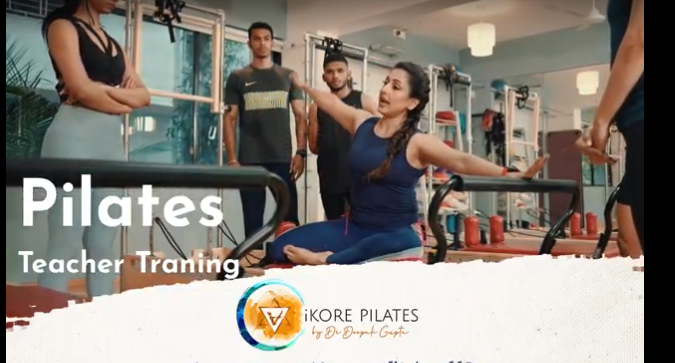In the realm of fitness and wellness, Pilates has long been praised for its ability to build core strength, enhance flexibility, and promote mind-body harmony. While there are many advanced forms of Pilates, everything starts with the foundation—Pilates mat 1 exercises. These entry-level movements lay the groundwork for strength, control, and body awareness. Whether you’re new to Pilates or returning after a break, Mat 1 is where the journey begins.
What Are Pilates Mat 1 Exercises?
Pilates mat 1 exercises are a series of beginner-level movements performed on a mat, using your own body weight as resistance. They are designed to teach fundamental Pilates principles: controlled movement, precision, breath coordination, concentration, and flow. These exercises target the core but also engage the entire body, helping to improve posture, balance, and mobility.
Unlike apparatus-based Pilates that uses machines like the reformer or Cadillac, mat exercises rely entirely on gravity and body alignment. This makes them accessible, affordable, and easy to practice at home or in group classes.
Why Start with Mat 1?
Jumping into intermediate or advanced Pilates without mastering the basics is like attempting to run before learning to walk. Pilates mat 1 exercises build a strong foundation by:
-
Strengthening the deep core muscles (transverse abdominis, pelvic floor, diaphragm)
-
Correcting postural imbalances
-
Training spinal alignment and flexibility
-
Establishing breath control, which is essential in Pilates
These exercises may look simple, but when performed correctly, they challenge stability, coordination, and endurance.
Core Principles Behind Pilates Mat 1
Before diving into specific movements, it’s essential to understand the core principles that guide every Pilates practice:
-
Centering – Everything begins from your core, often called the “powerhouse.”
-
Control – Movements are deliberate and controlled, not rushed or careless.
-
Precision – Every gesture has a purpose; attention to detail is critical.
-
Breath – Inhale through the nose, exhale through the mouth, using breath to assist movement.
-
Flow – Exercises transition smoothly, maintaining rhythm and grace.
-
Concentration – Mental focus enhances physical movement, building mind-body connection.
Key Pilates Mat 1 Exercises to Learn
Let’s explore some fundamental pilates mat 1 exercises that form the backbone of any beginner Pilates routine:
1. The Hundred
This classic exercise is all about warming up the body, increasing circulation, and engaging the core.
-
Lie flat on your back, legs extended at a 45-degree angle, arms by your sides.
-
Lift your head, neck, and shoulders off the mat.
-
Pump your arms up and down while inhaling for 5 counts and exhaling for 5 counts.
-
Repeat for 10 full breaths (100 pumps).
Focus: Core engagement, breath coordination.
2. Single Leg Stretch
This move trains abdominal strength and pelvic stability.
-
Lie on your back with knees bent and pulled into your chest.
-
Lift your head and shoulders off the mat.
-
Extend one leg to a 45-degree angle while holding the opposite knee with both hands.
-
Switch legs in a scissor motion.
Tip: Avoid tugging the neck and focus on keeping the lower back grounded.
3. Rolling Like a Ball
It may feel playful, but this exercise builds spine flexibility and balance.
-
Sit with knees bent, feet lifted, and arms hugging your shins.
-
Round your spine and tuck your chin.
-
Rock back onto your shoulders, then roll forward to balance without letting your feet touch the floor.
Note: Control is key—don’t use momentum.
4. Single Straight Leg Stretch
This stretches the hamstrings while maintaining core control.
-
Lie on your back, legs extended.
-
Lift one leg toward the ceiling and hold behind the calf.
-
Lift head and shoulders; the other leg hovers just above the mat.
-
Pulse the top leg twice, then switch.
Challenge: Keep abdominal muscles pulled in the entire time.
5. The Roll-Up
This is a slow, controlled version of a sit-up, emphasizing spinal articulation.
-
Lie flat, arms extended overhead.
-
Inhale to prepare; exhale to roll up one vertebra at a time.
-
Reach toward your toes, then roll back slowly to starting position.
Helpful hint: Engage your deep core muscles to avoid using momentum.
6. Leg Circles
This exercise enhances hip mobility and strengthens the pelvic stabilizers.
-
Lie flat with one leg extended to the ceiling.
-
Circle the leg across the body and around in a smooth motion.
-
Repeat in both directions, then switch legs.
Goal: Keep the pelvis still as the leg moves.
Common Mistakes in Mat 1 Pilates
Even though pilates mat 1 exercises are designed for beginners, they require precision. Here are a few common errors to avoid:
-
Tension in the neck and shoulders: Always engage the core to lift the upper body, not the neck.
-
Holding the breath: Controlled breathing enhances performance and safety.
-
Overarching the lower back: Engage the abdominal muscles to protect your spine.
-
Rushing through movements: Quality over quantity. Slower is often harder—and better.
Who Can Do Pilates Mat 1 Exercises?
One of the best things about Pilates mat work is its adaptability. These exercises are suitable for:
-
Beginners with no prior fitness experience
-
Seniors looking for gentle strength training
-
Post-injury individuals with doctor’s clearance
-
Athletes as a form of cross-training
-
Anyone with a desk job seeking better posture
However, individuals with certain medical conditions should consult a healthcare provider before starting any new exercise routine.
How to Integrate Pilates Mat 1 into Your Routine
You don’t need hours each day to benefit from Pilates. A 20–30 minute session three to four times a week is a great starting point. You can do it in the morning to energize your day or in the evening to unwind and stretch.
Here are a few ways to keep it interesting:
-
Follow a video guide for visual instruction.
-
Use props like a small ball or towel to add variation.
-
Practice in a quiet space where you can concentrate.
Final Thoughts
Pilates mat 1 exercises are far more than simple stretches—they are powerful tools to build strength, stability, and mindfulness. By focusing on form, breath, and body awareness, these exercises create a solid platform for more advanced Pilates practice or any other physical activity.
What starts on a mat often carries over into everyday life—improved posture, reduced back pain, and a stronger core are benefits that extend far beyond the workout session. Whether you’re just beginning your Pilates journey or using Mat 1 to reconnect with the basics, consistency and mindfulness are your best companions.
So, unroll your mat, center yourself, and begin. The journey toward better movement and holistic well-being starts with one breath, one roll-up, and one hundred pumps at a time.



